


- usually
happen that either through ignorance or distraction, often arriving at a destination without having the slightest idea what I'll find me. Then the pleasant surprises are usually larger and rewards of getting there huge! This just happened to me in September last year, when I accepted an invitation from French friends Michelle and Jacques ( on whom I have referred to some other input ) to visit with them the hometown of Jacques, the beautiful, lovely, stunning Albi, located in the department of Tarn (which is the parent ) within the region Midi-Pyrenees . We set off one morning from Nimes ( in the region of Languedoc-Roussillon, as I mentioned in the entry 'Nimes' ) and after crossing regions and peoples of the road at this point I was making it impossible to donate to them other superlatives ( each traversed region surpassed the previous ), we arrive finally at sunset, ready to enjoy a typical local snacks in the house of Jacques. So the next morning (very early as I like to discover a new site), went to visit a city that had recently been honored with the distinction of 'Heritage' by UNESCO (July 2010 ). City which, thanks to the patience of their friends for showing their favorite spots, thanks to the desire that we all share together we put those days of visits, I appreciate greatly, and especially 'give in to their charms. " But what has Albi that makes it so attractive in the eyes of any traveler? I think first, is the artistic and architectural heritage and the well preserved atmosphere 'medium or small city' , with a rich past and a better present, and a typical activity inner city, do not be seduced by the lights and the stress of big cities.
-
-
Like all French people, Albi protects a history of riots, wars and trade and economic wealth. Thanks to the Tarn river that runs through it and that has marked his political and financial Albi has been inhabited since prehistoric times, although it was the Romans who ( during the conquest of Gaul ) established the first settlement, in the absence of archaeological remains, it was never supposed considered a great city. But that first Roman settlement ( 'Civitas Albigensium' ), was declared early 'archbishop' ( IV century) when the conversion of the pagan empire to Christianity, and since then the history of Albi has been a series of clashes religious and times of great splendor. Who perhaps marked an era in the region, were the 'Christian sect' the 'Cathars' or' Albigensian ' who, as I said in the previous report (' Midi-Pyrenees Region , a marvel of towns and landscapes' ) during the thirteenth and fourteenth centuries in the 'Middle Ages' dominated the political and religious life of the region Midi-Pyrenees . Well, was Albi the center of this new religious movement and from there spread to all neighboring regions. As we know, jealous of that political and financial strength, Pope Innocent III and King Philip Augustus of France ( at that time the region Midi-Pyrenees considered an independent region dominated by the counts of Toulouse, although closer to the kingdom of Aragon to France ) undertake 'cross' Albigensian. These wars of religion (of a military religious crusades and the Inquisition ) left a toll of tens of thousands of massacred entire villages in a state of complete ruin, many more perish in the fires. Albigensian crusades they are considered by historians as one of the most cruel bloody events in the history of the Catholic Church. Later, when allied to the Catholic church that the king of France succeed in imposing their political power and "spiritual", making large infrastructure works, with Albi the city that receives large-scale constructions such as 'Cathedral of Santa Cecilia' , it would take two centuries to reach its final height, and since then, with its brilliant design, a masterpiece of engineering and the use of red brick construction and support, never ceases to amaze everyone we arrive to your environment.
-
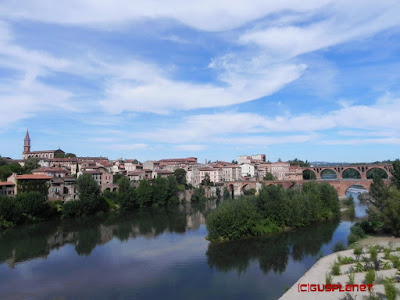
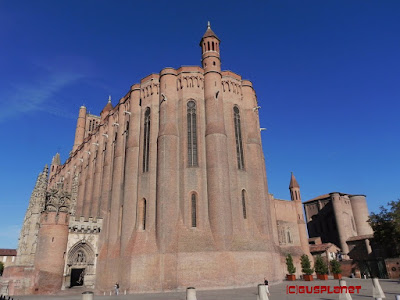
-The 'Cathedral of Santa Cecilia' in Albi is simply spectacular and certainly takes away the breath in his first observation. Considered a masterpiece of medieval, its peculiarity is that the building remains the largest area to be built entirely on 'red brick' and although we may seem, viewed from outside, like an immense fortress, perfect fit and harmoniously with the surrounding architecture. One hundred and thirteen feet long, seventy-eight feet, its size overwhelmed. Built on the basis of ancient Christian churches dating from the fourth century, the construction works had to deal with two centuries (from 1280 to 1482 ) and his work is due to Italian architects and engineers. If your exterior surprisingly sober inexpungable strength and character, the interior bears a greater enrichment. Composed of several galleries and shrines, inside we can dazzle us with some of the largest fresh in any church ever built: the cool called 'The Last Judgement' covers 300 m2, to mention some. Touring the 'Cathedral of Santa Cecilia' , visit the treasure, I was pleasantly surprised to feel surrounded by a cozy atmosphere, something that rarely happens to me in such a significant building ( the floor feel cold, dark, suffocating. ..) and the special light that passes through the morning and going through the thousands of windows its walls, a gentle aroma of incense and candles lit by hundreds of devotees, I must confess that I was very attracted to a cathedral that dazzles at every turn.
As would surprise me after the building next to the 'Cathedral of Santa Cecilia' , I mean the old 'Palacio Episcopal Berbie' , today the 'Museo Toulouse -Lautrec ' . That aristocrat and painter born in Albi in 1864 and by the end of the nineteenth century was able to portray the bohemian and decadent cabarets, cafes and theaters of Paris he frequented. Built between the thirteenth and fourteenth centuries, the 'Palacio Episcopal Berbie' , symbolized ( as the Cathedral of Santa Cecilia ) the power achieved by the Archbishops of Albi after the Albigensian Crusades, and its architecture military passive defense based on the extraordinary height and thickness of its walls. As we know Toulouse-Lautrec died at age 36 years ( due to congenital syphilis and infected during visits to the cabarets of Montmartre ), in 1901 his mother bequeathed his entire estate to the city art of his birth and where his family was originally from. Since 1922 they pieces are shown in the 'Palace Berbie' to great pleasure of all who appreciate the work of this unique portrait. Walking the streets of Old Albi is marvel at a landscape and architecture very well preserved, to admire the originality of their houses and palaces designed in brick and topped with huge wooden bars. Almost all urban heritage that we can see today are from the Renaissance ( XV century), when Albi acquired great glory because of the wealth of an ingredient that would revolutionize the time: cake, that material used since the world's artists and with the cultivation of saffron, were the 'black gold' of the Albigenses.
-
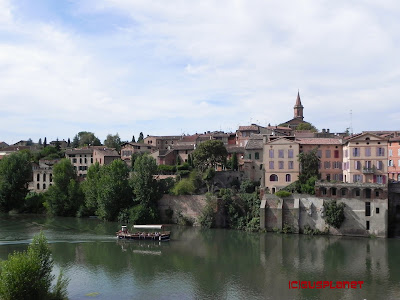
-Like any self respecting city in Albi popular markets and sidewalk cafes can we be the best environment to appreciate the local life from a close, an activity does not stop at any time of year, thanks to festivals and events organized from the secretariat of culture and local organizations. I think the best location to see Albi is from nearby 'Old Bridge' , built in ... 1035! be one of the oldest active bridges in France. Made of stone and half-eight arches, from its construction, Old Bridge has witnessed hectic trading activity that has always been developed in Albi circulated by the transport of wine from Gaillac, hemp Canavière, the plant dye called cake, saffron, glass and ceramics Grésigne Montans, among many other goods. Beautiful sights awaited us in Albi: the beautiful 'Market Hall' Built in 1901 by Mr. André Jules Michelin, the future inventor of the tire. The Museum Lapérouse, dedicated to Jean Francois de Galaup, Comte de La Perouse , great navigator of the eighteenth century ( born in Albi in 1741 ), who turn around the world for three years, performing major scientific work that would mark later knowledge about plants, animals and sites visited in their travels. Lapérouse also participated in the War of Independence of the United States and therefore was elevated to the rank of Captain of the vessel by King Louis XVI. Then I discovered Albi, savoring the local delicacies at home with my host and I was pleasantly surprised by its urban fabric and landscape, I felt ready to visit some other towns in the region. And over there we head into our next posts, provided that you, so consider it!
-
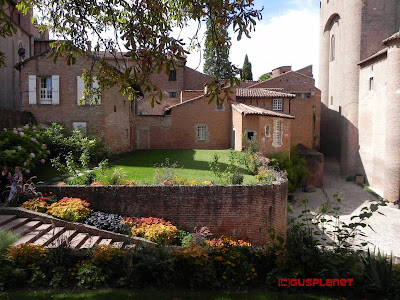
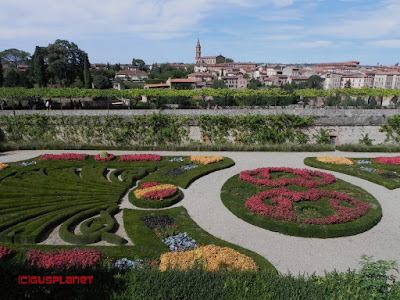
-
Quelques Notes: Once again I greatly thank the patient and the delivery of my local hosts, Michelle and Jacques, who showed me beautiful large districts and towns of the region and who taught me that when you have an open mind and curious, always the way we may have people like them. Starting from Albi, we visit major sites' Cathar Country 'in the' Midi-Pyrenees': Abbeys and 'Saint-Papoul', 'Villelongue', 'Caunes-Minerva', 'Saint-Hilaire', 'Lagrasse', ' Fontfroide 'and' fin '. Castles 'Saissac', 'Lastours', 'Villerouge-Termenès', 'Termes', 'Arques', 'Usson', 'Puilaurens in Lapradelle', 'Peyrepertuse in Duilhac', 'Quéribus in Cucugnan', 'Aguilar' 'Castle and Ramparts of the Cité de Carcassonne' and it is the latter, our next destination!
0 comments:
Post a Comment